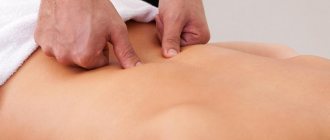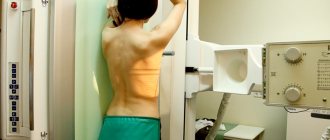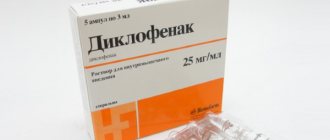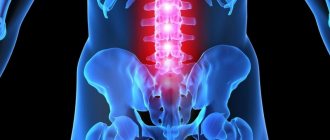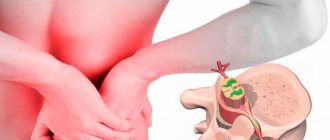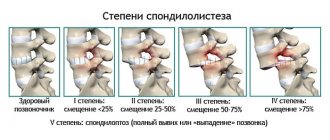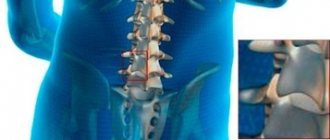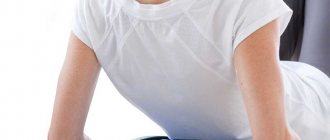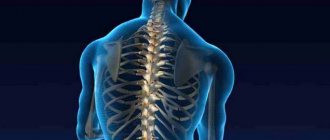A herniated disc causes severe back pain and a lot of discomfort. For hernia of the lumbosacral spine, specialists often prescribe yoga therapy. With its help, you can achieve relaxation of all necessary muscle groups, restore blood flow in the damaged area and lymph outflow, which contribute to the rapid restoration of damaged cartilage tissue. Also, after performing asanas, there is an improvement in the functioning of all parts of the spinal column and an increase in the distance between the vertebrae.
Yoga as a prevention and treatment of spinal hernias
Protrusions and other problems in the spine are quite common. They often appear asymptomatically. In the initial stages, the pathology practically does not bother the person. But gradually pain and some other symptoms begin to appear.
Yoga for a hernia can be performed, but remember that extreme care must be taken so as not to harm the sore back. Many asanas are aimed not only at improving health, but also at treating many diseases.
Yoga for the spine should be performed with a competent approach, especially for those who have hernias. Movements are coordinated, slow and smooth. Yoga for a hernia can be performed for any part of the back, as well as for general purposes.
A herniated disc occurs as a result of injury or displacement of the disc core. This bulging contributes to compression of the nerve endings, as a result of which a person feels severe discomfort not only in the back, but often in the limbs.
It is important to start performing asanas at the initial stage of the onset of pathology, since severe degrees of the disease may require serious treatment, and sometimes surgical intervention, after which many physical exercises will be prohibited for a long time.
Spinal diseases are very common in pregnant women. Therefore, it is very important to start practicing it as early as possible, possibly in the early stages of pregnancy with the permission of the attending physician.
Savasana corpse pose
Lying position on your back. Arms and legs slightly apart (approximately 45 degrees). The head is in line with the spine. Breathing is slow and deep, without tension
It's important to try to relax. As you exhale, the body “releases”; you need to feel how it spreads across the floor
If you are in the right position, you will feel like you are breathing from your stomach - this is natural breathing. And this means that the body has begun to restore energy.
Relax even more, try not to think, watch your breathing. It is necessary to spend at least five minutes in Shavasana. By the way, experienced yogis can practically replace a night’s sleep with a two-hour lesson.
Features of performing asanas for spinal hernias
Yoga for spinal hernia is allowed, but it has its own characteristics. For a hernia, it is recommended to perform only the most basic and not difficult asanas. There are special exercises that are designed specifically for people with diseases of the spinal column.
Performing asanas for spinal hernias requires the supervision of a practitioner so that he can monitor the correctness of their execution. Many people notice an improvement in their body’s condition within a month after using certain asanas. An important rule is regularity of classes. Only with constant work is a significant health effect possible. Available asanas for such pathologies are:
- tadasana;
- savasana;
- virabhadrasana;
- baddha konasana.
Basic asanas are used for general strengthening of the body. And there are special asanas that are aimed specifically at the back area and spine.
It is very important not to create artificial excessive stress on the spine. When performing asanas, you need to monitor your condition and control your movements.
Diagnosis of the disease
When applying for a consultation, a specialist will definitely conduct a visual examination and find out the causes preceding the exacerbation attack, after which he will refer you for a series of examinations. To diagnose a cervical hernia, the following instrumental research methods are used:
- X-ray of the corresponding part of the spinal column;
- magnetic resonance therapy;
- CT scan;
- radionuclide myelogram (a special substance is injected into the spinal cord canal, then an x-ray is performed);
- Ultrasound.
Using these methods, the localization of the hernia, instability of the vertebrae, the degree of damage to the spine in the neck, the presence of areas of compression of the spinal cord, the condition of the blood vessels and nerve processes are determined.
Precautions and contraindications
Yoga for a hernia should be performed as gently as possible. You cannot make sudden movements and asanas that involve rapid transitions from position to position. If a person feels severe back pain, it is better to refrain from doing exercises.
If sudden, severe or aching pain appears during exercise, you must stop the exercise or reduce its intensity. While performing asanas, you should adhere to smooth transitions from position to position, and also ensure that your back is fairly straight.
It is in the morning that people with spinal problems feel maximum discomfort, so it is advisable to practice at this time. Yoga involves smooth, measured movements, which allows the back to get into good condition in a fairly short time.
It is forbidden to train on a full stomach, but performing asanas on an empty stomach is also not recommended. It is necessary to adhere to a time interval after eating of about 2 - 3 hours. Monitor your well-being during class. If tension appears in your back, it is best to stop exercising.
Complexes for the spine should be performed in a relaxed state. In addition, you should avoid exercising during illness, high fever, headaches and joint pain.
Spinal exercises should be performed under the strict supervision of a practitioner. If a person uses asanas independently at home, then it is necessary to first study the correctness of the technique.
Yoga and prevention of back diseases
Exercises help not only with existing diseases, but are also an excellent prevention for many ailments. For example, for problems with the spine, many asanas significantly improve a person’s condition. And for people who do not have back problems, they are an excellent preventive measure against their occurrence.
Regular exercise helps relieve pain from excessive physical activity, including the back. People who feel frequent fatigue after a hard day of work, and also have some defects such as scoliosis, osteochondrosis and others, should regularly practice at least some asanas so that these diseases do not develop into more severe pathologies.
Sets of exercises stimulate blood circulation in tight areas of the back. During the day, not all muscles on the human body are connected to work. There are also those who practically do not participate in it. In this regard, clamps often appear in these places, especially if a person does not engage in physical activity. Practice will be an excellent prevention of the appearance of ailments in these areas.
Bharadvajasana on a chair
Sideways position while sitting on a chair. The thigh is adjacent to the back of the chair. The buttocks should be on the seat. You need to pull your torso up, pull your shoulders back and keep your knees and feet together. This is the starting point.
Exhale, turn your whole body towards the back of the chair. The legs are motionless. Hands hold the back of the chair, they will participate in the twisting process. Avoid sudden movements.
Twisting is done while exhaling, the back should be relaxed. The head turns along with the body. Final position: Turn to the right and look over your shoulder. You should spend 20-30 seconds in this position. Breathe freely; as you exhale, return to the starting position.
Now sit with your left thigh towards the back of the chair and repeat the exercise in the opposite direction.
httpv://www.youtube.com/watch?v=embed/Jspvcliv13M
How effective are yoga classes for spinal hernia?
The development of spinal column pathology can lead to a number of complications. Due to their lifestyle, many people acquire spinal diseases: osteochondrosis and other abnormalities. They can be treated with medication and regular exercise.
It is allowed to do yoga if you have a herniated disc, but you should be extremely careful. Yoga classes significantly improve a person’s well-being. Many people note the relief of pain from a vertebral hernia and the elimination of stiffness of movement. It should be remembered that classes are possible only with the permission of the attending physician, since severe forms of the disease require specialist supervision.
If any unpleasant symptoms appear while performing asanas, you must stop practicing and postpone them for some time. In order for the maximum effect of yoga, you should eat properly to provide the internal organs with the necessary amount of nutrients.
With regular exercise, it is possible to get rid of the problem within a few months. However, for moderate illness, such therapy may take a little time, but generally, treatment takes no more than a year. After which you can continue to exercise to maintain the effect.
We make a plan and carry it out
In any important matter, it is good to adhere to a specific plan; in matters of overcoming an illness, the course of treatment prescribed by doctors becomes such a plan. The list of means to combat damage to the discs and tissues of the bone base of our musculoskeletal system is familiar and tested in practice
The following options for restoring the functioning of the spine are widely used in the arsenal of doctors:
- and blockades to relieve pain;
- and rubbing the back with attraction;
- ;
- .
Among the recommended methods used by doctors, gyms are not the least important. People who have experience in yoga quickly and efficiently return the joy of movement and freedom from pain to the back and spine.
A philosophical attitude to life, the ability to listen and love your body and a healthy lifestyle make it safe and beneficial for recovery. The good effect of Eastern practices in treating the spine should not be perceived as an immediate incentive to action.
Yoga for hernias of various locations
It is very important to maintain balance when performing any asanas. In addition, inverted asanas are not recommended, as well as those that involve too sharp transitions and excessive stretching and bending.
The problem can appear in any part of the spine. Depending on which department it is located in, there are certain restrictions on the performance of some asanas. For example, if you have problems in the lumbar sector, you should refrain from asanas that require excessive extension of the spine. In a cervical one, you cannot make sudden head movements.
TOP 5 facts about hernia. Neurosurgeon's answer
Many people come to our clinic every day whose MRI scans have revealed herniations and protrusions of intervertebral discs. As a rule, people have many questions about what to do about it and how to continue living. In this article we will try to clearly answer the most frequently asked questions.
- What is a herniated disc, how does it differ from protrusion?
The spinal column (spine) consists of vertebrae and intervertebral discs. Intervertebral discs are elastic cushions located between the vertebrae. They increase the stability of the spine to vertical loads, absorb shock when running, walking, jumping, and are involved in ensuring mobility and flexibility of the spine.
The diameter of the intervertebral disc normally corresponds to the diameter of the vertebral body. In some pathological situations, the disc may bulge beyond the spine. A bulge of up to 5 mm (0.5 cm) is called a protrusion, a bulge of more than 5 mm (0.5 cm) is called a hernia.
- Is a herniated disc dangerous?
Disc bulge can occur in any direction (forward, backward, up, down). A forward bulge is called an anterior hernia (ventral hernia). This is an extremely rare condition. There are no important structures in front of the spine, so an anterior hernia is absolutely safe, does not cause any clinical symptoms, and does not require any treatment. Such a hernia on MRI is an incidental finding.
The situation is similar with regard to bulging of the intervertebral disc up or down. This bulge is called a Schmorl's hernia. Schmorl's hernias are also an accidental finding and do not require any treatment.
Posterior hernias are of greatest clinical interest. Posterior to the vertebral bodies are important structures such as the spinal cord, spinal cord membranes, and roots.
Depending on the location of the bulge, posterior hernias are divided into median, paramedian and foraminal.
Median and paramedian hernias bulge into the lumen of the spinal canal, where the spinal cord and its membranes (dural sac) are located. The reserve volume of space in the spinal canal is relatively large, so small hernias (up to 1 cm) may not cause any symptoms. Large hernias of this location cause narrowing (stenosis) of the spinal canal and can compress the spinal cord and its membranes. In this case, characteristic neurological symptoms develop and cerebrospinal fluid dynamics become difficult. It must be taken into account that the spinal cord ends at the level of the last thoracic vertebra, therefore median hernias of the lumbar spine, even large ones, are relatively safe.
Foraminal hernias are protrusions of the intervertebral disc towards the foraminal opening, where the nerve root passes. The reserve volume of space in this area is very small, so even relatively small hernias and even protrusions can cause neurological symptoms (radicular syndrome).
- Is it necessary to operate on a hernia?
Anterior hernias and Schmorl's hernias definitely do not require surgical treatment.
There are exactly three indications for surgical treatment of posterior hernias:
1. Progressive, rapidly increasing focal neurological symptoms (arm or leg failure, difficulty urinating).
2. Ineffectiveness of conservative treatment within 3 months.
3. Unbearable, intractable pain syndrome
In all other cases, surgical treatment is not indicated. Surgery is a last resort treatment when all other options have been exhausted. Surgery is always a risk, it requires a long rehabilitation, and there is no guarantee of a cure. Statistics clearly show that relief after surgical treatment occurs in 85% (quite effective treatment), but in 72% of cases, those who experience relief after surgery within five years experience complications. Such complications include: recurrent hernia, adhesions at the operation site, operated spine syndrome. Thus, in 72% of cases, after 5 years, the pain syndrome returns. And in this case, treating it becomes much more difficult, much more sophisticated.
- How to treat a hernia?
The question is formulated incorrectly; it is not the hernia that needs to be treated, but the person; a hernia is just a piece of cartilage tissue. In most cases, a person is worried not about the fact of having a hernia, but about pathological symptoms (pain, lumbago, numbness, weakness in the limbs, dizziness, etc.). Most often (95%) these symptoms are not associated with the presence of a hernia at all. It is necessary to look for the cause of the disease, it could be myofascial syndrome, facet syndrome, myositis, neuropathy, discitis, etc. Otherwise, how can one explain why a hernia has existed for many years, and the symptoms appeared yesterday, or why a friend has a huge hernia and does not hurt, but I have a small one? and such pain? In any case, it is not recommended to treat the disease on your own; consultation with a specialist is necessary, because each of these diseases requires its own special approach. It is extremely wrong to treat any back pain with NSAIDs, vitamins and muscle relaxants; it is necessary to look for the cause of the pain.
- Can a hernia resolve?
Yes maybe. The process of resorption of a hernia is called resorption. Resorption occurs through three main mechanisms:
- Mechanical, spontaneous reduction
- Wrinkling and dehydration
- Phagocytosis and enzymatic destruction
This phenomenon is very common and there are many proven cases on this issue (for example, https://cyberleninka.ru/article/v/regress-gryzhi-diska-poyasnichnogo-otdela-pozvonochnika).
These are the most common questions asked by patients. If you have any questions that are not covered in the article, you can always ask on the official website of the clinic or during a personal appointment.
Yoga for cervical disc herniation
To eliminate unpleasant symptoms, the following asanas are best suited:
- savasana;
- vrksasana;
- varihardasana;
These asanas are aimed at relieving tension in the neck. Yoga for a spinal hernia should be performed with extreme caution. If the hernia is located in the cervical region, then great attention should be paid to the position of the head during practice.
To treat a hernia in the cervical spine, other additional treatment methods are often used, such as physical therapy and drug therapy. They can be used in combination with yoga therapy.
Symptoms of the disease
A hernia of the cervical spine can be suspected when weakness and periodic attacks of numbness in the arms appear. Then stiffness of the neck and limited movement appear, up to the inability to tilt the head. The following symptoms also indicate the presence of the disease:
- frequent migraine-type headaches;
- increased fatigue;
- dizziness;
- general weakness;
- pain in the neck, aggravated by sudden movement.
As the disease progresses, disruption of the nervous system is observed, manifested in decreased visual acuity, deterioration in the quality of vision, the appearance of constant noise in the head, and impaired coordination of movements.
If you are concerned about these symptoms, you should definitely consult our specialists at the Innovative Medical Center. In no case should you self-medicate, because drugs taken uncontrollably often only help relieve swelling and inflammation, but do not in any way affect the underlying cause. After some time, the disease will definitely recur, and the symptoms will be more threatening. Such neglect of one's health usually has negative consequences.
Yoga for the thoracic spine
This pathology often appears in the thoracic region. In this place, its appearance is due to a specific lifestyle, the presence of scoliosis and insufficient exercise. For diseases of the thoracic spine, the following asanas can be performed:
- tadasana;
- balasana;
- utthita parsvakonasana.
They are aimed at strengthening muscles, as well as relieving pain in this area. They are maximally balanced so that their performance is accessible to people with problems in the thoracic region.
Ardha Svanasana
Stand opposite the wall, a meter away from it. Bend forward, placing your hand on the wall shoulder-width apart, at chest level. The head and neck are in line with the body. Inhale-exhale, bend forward from the hip. Hands move down the wall. Legs are straightened, parallel to the wall. The body is perpendicular to the floor.
Inhale and straighten your arms even further. Now they are parallel to the floor
Exhale, the hips are pulled back, lengthening the spine (it is important to keep it straight). Inhale, pull up, exhale - retract the spine
A deflection forms in the lumbar region. If you feel pressure on your lower back, bend your knees.
Final position: the torso forms an obtuse angle (90 degrees) relative to the legs. No overvoltage. As we inhale, we return to a standing position.
Yoga for hernia of the lumbosacral spine
The most severe hernias are usually in the lumbar spine. Since their treatment is complicated by their unusual location, yoga for this problem should be treated with special care. The following asanas are available for performance:
- supta padangusthasana;
- ardha svanasana;
- adho mukha savasana.
These asanas are aimed at relaxing the lower back. When performing them, it is necessary to ensure that the back is as straight as possible and there is no excessive tension in other parts of the spine.
Prices
| Services list | Price, rub |
| Appointment (examination, consultation) with a traumatologist-orthopedist, kinesiotherapist, primary | 1 600 |
| Initial appointment (examination, consultation) with a neurologist professor | 2 600 |
| Individual lesson with an instructor | 2 700 |
| PRP therapy | 6 500 |
| Ultrasound diagnostics of 1st part of the spine | 2 200 |
| Acupuncture | 2 700 |
| ERT Hivamat - therapy | 2 200 |
| Shock wave 1 procedure | 2 000 |
| Manual therapy 1 department (15 min.) | 2 700 |
| Osteopathic correction | 7 500 |
| Manufacturing of individual insoles | 6 500 |
Call the Innovative Medical Center by phone!
We will help cure a herniated cervical spine without surgery!
Contact us
Call now
8 (495) 803-27-45
Make an appointment through our service
Make an appointment
Yoga for intervertebral hernia
Intervertebral hernia is a fairly common phenomenon among both older people and young people. Recently, cases of this pathology have become more frequent. This is probably due to lifestyle and sedentary work. Pathology can appear in any part of the spine.
The following asanas are excellent for treating the problem:
- ardha uttanasana;
- virabhadrasana;
In order to perform a set of exercises for this disease, you can perform both basic and secondary asanas, combining and combining them with each other.
Who will treat you?
The Innovative Medical Center employs doctors of the highest category, doctors and candidates of medical sciences, who have extensive experience in the treatment of intervertebral hernias of the lumbosacral spine and have already helped many patients:
Bogdanov Vadim Yuryevich – chief physician, orthopedist-traumatologist. Completed internships in Germany to perform complex arthroscopic interventions, successful experience in performing thousands of operations. Read more about the doctor.
Ronami Valery Guseinovich is a professor, doctor of medical sciences, neurologist, reflexologist and chiropractor with 40 years of experience. Read more about the doctor.
Yoga for protrusion of the lumbar spine
Initially, a protrusion is formed, after which a more serious problem may appear if treatment is not started in a timely manner. However, a person may have protrusion for many years. Yoga therapy is aimed at relieving tension and relaxing this area, as well as releasing pinched nerve endings as a result of the problem.
For vertebral hernia in this department, the following asanas are allowed:
- urdhvahastasana;
- baddha konasana;
These positions allow you to relax the lumbar region and relieve pinched nerve endings. It is necessary to perform the asana in a relaxed state, without straining the muscles of other parts of the back.
When not to do yoga
The practice can be used not only for treatment, but also for the prevention of many pathologies, including the spinal column. If you have existing pathologies, you cannot do yoga during severe pain. In addition, you should refrain from any physical activity during illness or at high temperatures.
Yoga for protrusion and hernia should be very soft, movements coordinated and smooth. Sudden movements are completely eliminated, as are sudden transitions.
Asanas suitable for the treatment of hernia in the lower back
To cure pathologies of the lumbar region, the most common asanas are urdhvahastasana and baddha konasana. They are completely different in execution, however, they have a common focus - relieving pain and tension in the lumbar region.
The set of exercises should be selected individually, since often a hernia has a number of concomitant diseases, in which some asanas will be prohibited. Therefore, before starting asanas, especially for beginners, it is necessary to consult a specialist in order to prevent possible complications.
